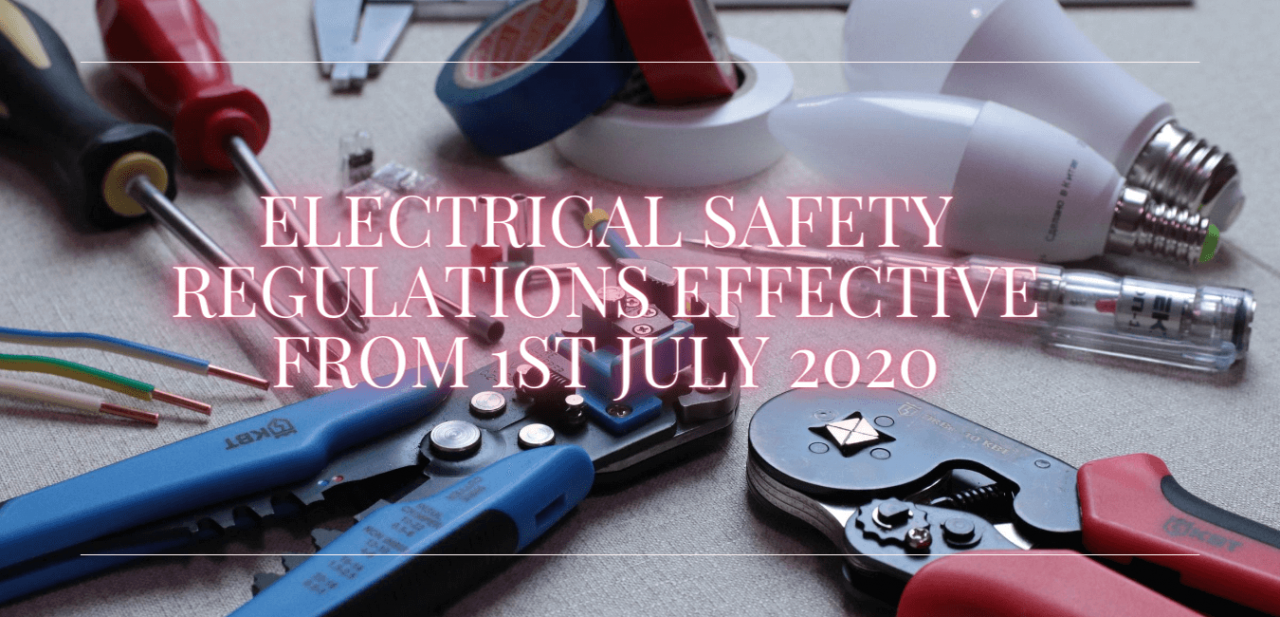
THE ELECTRICAL SAFETY STANDARDS IN THE PRIVATE RENTED SECTOR (ENGLAND) REGULATIONS 2020 COME INTO FORCE ON 1ST JULY 2020 FOR LANDLORDS OFFERING NEW RESIDENTIAL TENANCIES FROM 1ST JULY ONWARDS.
For existing tenancies, an electrical safety test will need to be carried out by 1 April 2021, with regular tests in accordance with the new regulations, which will apply to all properties across the PRS. A breach of the regulations could see landlords fined up to £30,000. The electrical safety regulations apply to Residential tenancies where tenants have the right to occupy either all or part of a premises as their only or main residence, they pay a rent, and it is not listed as an excluded tenancy. The regulations currently only apply to rental properties in England only. And the regulations replace those already in place for HMOs.
When is an inspection required
If you are renting out a property in England, any tenancy you create or renew on or after July 1st 2020 will require an electrical inspection and a report on the condition of the property (EICR) performed by a qualified person. Renewals in this case include statutory periodic tenancies that are created at the end of a fixed term on or after this date.
For pre-existing tenancies, you will need to have an EICR performed on all existing tenancies before April 1st 2021.
Who must have copies of the EICR
The Electrical Safety Standards in the Private Rented Sector (England) Regulations 2020 set out a number of different requirements around providing copies of the EICR to relevant people: The EICR must be given to all of the tenants before they occupy the property. When you replace the EICR you must provide them with a copy of the new report within 28 days of the inspection. If a tenant requests a copy of the EICR in writing, you must also provide them with one within 28 days. Where the local authority requests the EICR you must provide them with a copy of it within seven days or face potential penalties. Any prospective tenants who request a copy in writing must be provided one within 28 days.
How often must the Inspection be carried out
The standard EICR lasts 5 years but this can be shorter so you should replace it as often as needed to ensure it remains valid.
What if the landlord already has an existing EICR.
While it may not be the intention of the legislation, the current draft of the regulations appears to invalidate any EICR that does not meet the standards of the 18th Edition of the Wiring Regulations. As this Edition only came into force in 2019 most EICRs are therefore potentially invalid.
What the landlord has to do for a breach
If a breach, or a potential breach, of your duty has been identified you need to have a qualified person either perform the work or investigate further within 28 days. This time limit can be shortened if the report recommends it so you should ensure you are complying with the time frame in the report itself.
Once this has been done you need to ensure you are receiving a written report from the qualified person as quickly as possible. This report needs to state that the electrical safety standards are now being met or that further remedial work is required.
Within 28 days of the work or investigation being carried out you must provide the written confirmation as well as a copy of the report to all of the tenants and the local authority.
Where the follow up investigation recommends further work being done, you must repeat the steps above until the property meets the electrical safety standards.
Who can test the electric circuit
The qualified person is someone who is competent to perform the inspections or the works.
The simplest way of identifying a competent person would be to refer to someone with the qualifications laid out in the recent update to the Electrotechnical Assessment Specifications. This includes people with industry recognised apprenticeships or Level 3 Certificates in Level 3 Certificate in Installing, Testing and Ensuring Compliance of Electrical Installations in Dwellings.
What enforcement action can be taken
The local authority is responsible for enforcement and they have a number of powers to act on this. Firstly, they can issue civil penalties of up to £30,000 per breach of these regulations. Secondly, where they have identified non-urgent work they must serve the landlord a notice detailing the work required and giving them 28 days to perform the work. The landlord may make representations to this within 21 days of the notice being served. If they do then the local authority must respond to these representations within 7 days. Until they respond the requirement to perform the work is suspended. Finally, if the local authority is satisfied the landlord is in breach and they have the tenant's permission to do so, they may perform emergency remedial work on the property and bill the landlord for any costs incurred.
Landlords can review ways to fund improvements on the government’s website: Domestic private rented property: minimum energy efficiency standard - landlord guidance
If you need property advice, contact us at
020 8852 5000 - admin@markbeaumont.com
We here to help you with any property related question.






Share this with
Email
Facebook
Messenger
Twitter
Pinterest
LinkedIn
Copy this link